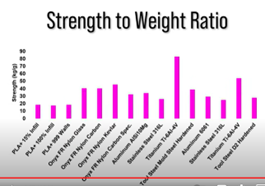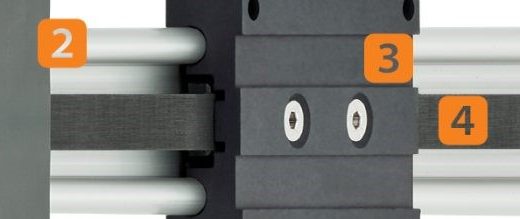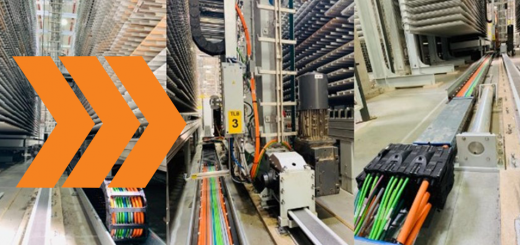3D Printing With Plastics
By Shizu Yamaguchi (Edited by Jared Worth)
Introduction
Imagine this: You’re enjoying a cookie. But it’s not just any cookie: it’s 3D printed and made from plastic waste. This isn’t a scene from a sci-fi novel. It’s now yesterday’s news. These little marvels, known as “microbites”, serve as an apt introduction to the world of 3D printing with plastics — a domain where the seemingly impossible is made possible (Mantey & Sorensen, 2024).
In this comprehensive article, we’ll explore various aspects of 3D printing with plastics:
- Why would you use plastics for 3D printing?
- What are the different types of plastics used for 3D printing? What are their properties?
- What are high performance plastics and when is it appropriate to use them?
So, let’s embark on this journey to understand the intricacies of 3D printing with plastics.
What is plastic and how is it used in 3D printing?
Plastic is a material that is synthetic or semi-synthetic — usually made from petroleum chemicals — that can change shape (P., 2023), while 3D printing is the process of building 3D objects from CAD models, using a variety of techniques (3Dprinting.com, n.d.). The term “building” here is important because in contrast to subtractive methods of manufacturing, which is cutting down materials to create shapes (not unlike cutting away at rock to create a sculpture), 3D printing is an additive technique, in which objects are made by layering materials to construct an object (3Dprinting.com, n.d.).
Both plastics and metals can be applied in 3D printing.
Why would you use metals?
The main reason you would use metal powders and materials in 3D printing would be to create high-strength components required by the relevant application. Metals are both strong and able to make complex shapes. The material is expensive, however, compared to plastics. (Markforged, n.d.).
Plastics are usually used in 3D printing because of their decreased cost, manufacturing ease, flexibility, and water resistance (P., 2023).
So how much does it cost to 3D print metals?
An estimated total cost to buy the equipment and do the printing, including all required accessories like build plates and software licenses, runs at close to $750,000 for Direct Metal Laser Sintering (DMLS) printing, whereas Bound Metal Deposition (BMD) printing might cost about $125,000. Fused Filament Fabrication (FFF) or 3D printing with plastics, on the other, other hand, would run closer to $5,000 in total costs (Ultimaker, n.d.). These numbers are not reflective of actual costs of printing for most individuals, as they would use a service to get their 3D printing done. However, the disparity in costs associated with various 3D printing methods reflects the relative expense involved in each type of printing process.
When should you opt for plastics over other materials?
It seems like a straightforward question, but it’s a bit more nuanced than that. The real question to ponder is: What kind of challenges does my plastic need to overcome in terms of force or wear, and what materials will help me reach my objectives? This line of thinking will guide you towards a more meaningful comparison between metals and plastics. You may find the following screenshot to be a useful guide.

(electrosync, 2023)
What are the main types of 3d printing?
FDM: Fused Deposition Modeling
- A thermoplastic filament gets extruded through a nozzle, melting and then forming layers of plastic in a shape that eventually gets built up into an object.
- Cheapest in terms of purchasing a machine and the plastic filament to supply it.
- Lowest accuracy and resolution.
- Ideal for proof-of-concept models and simple prototypes (formlabs, n.d.).
- Most popular materials: PLA (brittle), ABS (tough, heat- & impact-resistant), blends, PETG (good mix of the two most popular materials), TPU (simple designs), and carbon-fiber filled plastics (Proto3000, 2023).
SLA: Stereolithography
- Photopolymer resin cured by laser.
- Lots of choice when it comes to material selection.
- High resolution and able to create highest accuracy and fine details.
- Ideal for rapid prototyping, molds & tooling, as well as patterns (formlabs, n.d.).
- Only technology that can print truly clear and transparent parts. Glass-filled plastics option available. Polyurethane is also quite long-lasting and durable (Proto3000, 2023).
SLS: Selective Laser Sintering
- Polymer powder fused by laser.
- Low cost per object, no support structures required.
- Strong mechanical capacity, similar to injection-molded parts.
- Ideal for rapid prototyping and end-use (formlabs, n.d.).
- Most common 3D print material is nylon because it is lightweight, strong, flexible, and resistant to the elements like UV, light, dirt, and chemicals. Most common variation is nylon 12, which is great for prototyping and end use. The material makes robust parts with material stability. Nylon 11 performs better than nylon 12 but it has higher elasticity, elongation at break, plus impact resistance and lower stiffness.
- TPU has high flexibility (Proto3000, 2023).
What are the most popular plastic 3D printing materials?
For FDM:
PLA: Easy to print relative to the other plastic filaments. Strong, rigid, brittle, biodegradable, UV-resistant, odorless, not very humidity resistant, not easily glued.
ABS: Usually chosen when more temperature resistance and robustness are required over PLA. Good wear resistance, UV-sensitive, but can create high fume emissions, and is not odorless.
PET: Softer plastic. Highly resistant to humidity and chemicals, food contact is okay, recyclable, wear resistance is good as well, heavier than PLA or ABS.
Nylon 6: Impact resistance is superior to other flexible filaments. Has issues with layer adhesion. Absorbs moisture. Potentially releases emissions.
TPU: Usually chosen because of its flexibility. Also has high impact resistance. Abrasion-resistant, oil- and grease-resistant, doesn’t easily glue compared to the other plastics.
PC: Has very high heat resistance and max stress capacity. Similar to ABS in terms of properties. UV-sensitive. Can be sterilized (Protolabs Network by Hubs, n.d.).
For SLA:
Standard SLA resins
Standard resin: Makes for high-resolution prints. The finish is smooth. It’s cost-effective and therefore works well for rapid prototyping. There is a link between colour and some of the properties of this type of plastic material. White resin, for example, provides a smooth surface finish and grey resin is ideal for complex designs.
Clear resin: This material can be transparent after processing. It has similar properties to standard resin in that it works well for rapid prototypes with complex details and with smooth surface finishes.
Engineered SLA resins
Tough resin: This resin works well for applications that have high amounts of stress and applied force. These resins are similar to ABS in tensile strength and modulus of elasticity. They are also shatter-resistant. Ideal applications include wear-resistant prototypes and enclosures with snap-fit joints.
Durable resin: This resin resists wear and tear and is also very flexible as well. This material also provides a smooth finish and is therefore great for rapid prototyping of consumer products with low-wear moving parts and ball joints.
Heat resistant resin: These resins tolerate high heat and stay relatively intact under high temperatures. Temperatures between 200 and 300 Celsius are usually tolerated. Mold prototypes, heat-resistant fixtures, casting, and thermoforming tooling are great applications for this material.
Flexible resin: Rubber parts can be mimicked with this type of resin. Flexible resin therefore stretches more readily to pulling forces. It is also ideal for parts that need to be bent or compressed. Ideal applications include ergonomic objects such as packaging, handles, grips, and overmolds.
Rigid ceramic-filled resin: Ceramic particles reinforce this type of resin. Ceramic particles include glass particles as well. This composition strengthens the material and makes for smooth surfaces. Thermal stability and heat resistance are also achieved with this particle’s addition. These parts resist deformation over time. With all these properties in tow, these resins are great for automotive and electrical components (Dassault Systemes, n.d.).
For SLS:
PA: Polyamides are usually referred to as nylon. Nylon versions that are commonly used in SLS printing are PA12, PA11, and PA6. These materials are all abrasion-resistant, chemical- and corrosion-resistant, adaptable and versatile, robust, and possess UV resistance.
PA12: The most used nylon in SLS printing, taking up about 90% of all industrial plastic production. This material is resistant to grease and fuel, is dimensionally stable, has low moisture absorption, is tough and wear-resistant.
PA11: A high-performance plastic. It offers stability dimensionally, flexibility, resistance to impact, and resistance to abrasion.
PA6: Can stretch but retain its shape afterwards. It stays rigid at high heat and is highly wear-resistant, works for electrical insulation, and has a smooth surface finish.
PP: Polypropylene is a thermoplastic polymer (nexa3D, 2023). This means that the material becomes soft when heated and then when it cools down, gets solid again. (CoPilot, 2024). This material is very durable, absorbs moisture, elongates when stretched, has strong plasticity, and is crystalline, rigid, and durable. The material is also flexible and lightweight, has a good surface finish, resists chemicals and deformation, has a low melting point, and has a good strength-to-weight ratio.
What are high performance plastics and when do they become essential in 3D printing?
High performance plastics are essentially plastics that attain higher material capabilities than standard engineering plastics (Performance Plastics, 2021).
Use thermoplastics for 3D printing if you need strength, rigidity, or high-temperature tolerance. High performance plastic parts can be heated and reshaped multiple times without permanent chemical changes. Thermoplastic materials like PEEK and PEKK are used in high-performance 3D printing for aerospace, automotive, healthcare, and oil & gas due to their mechanical properties, such as chemical resistance, wear resistance and thermal stability (Jacob, 2023).
In short, high-performance plastics should be used for 3D printing when you need better material properties than standard filaments can provide.
We at igus offer several different SLS print materials. Here is a quick guide:
i3 = Extremely wear-resistant, for gears, burn and fog testing, automotive interiors
i6 = White, great with worm gears, abrasion resistance, robust, FDA approved
i8 = Black, offers ESD protection
Other material options include FDM filament, DLP resin and our print2mold production process (Yamaguchi, 2023).
Conclusion
As you can see, there are a great number of materials now available for 3D printing. From PLA to ABS, as well as nylon to high performance plastics, each material has its own unique properties and characteristics that make it suitable for different applications. With the right material, you can create high-quality, functional parts that are tailored to your specific needs. As 3D printing technology continues to evolve, we can expect to see even more exciting developments. Just be sure not to eat the inedible kinds. 😊
References:
3Dprinting.com. (n.d.). What is 3D Printing. What is 3D printing? How does a 3D printer work? Learn 3D printing
Copilot. (2024, May 24). 10:28am, query: what is a thermoplastic polymer in layman’s terms, Copilot (bing.com)
Dassault Systemes. (n.d.). SLA 3D Printing Materials Compared. https://www.3ds.com/make/solutions/blog/sla-3d-printing-materials-compared
electrosync. (2023, April 24). 3D Printed Metal vs CNC Machined – How Strong? [Video]. YouTube. https://www.youtube.com/watch?v=Js3bJ1B8ySM
formlabs. (n.d.). 3D Printing Technology Comparison: FDM vs. SLA vs. SLS. https://formlabs.com/blog/fdm-vs-sla-vs-sls-how-to-choose-the-right-3d-printing-technology/
Jacob. (2023, July 2). The Ultimate Guide to Thermoplastic 3D Printing: Everything You Need to Know. 3D Printed. [2023] The Ultimate Guide to Thermoplastic 3D Printing: Everything You Need to Know – 3D Printed (3d-printed.org)
Mantey, D. & Sorensen, E. (2024, May 16). These edible 3D-Printed cookies are made of plastic waste [Video]. Design and Development Today. https://www.designdevelopmenttoday.com/video/video/22910058/these-edible-3dprinted-cookies-are-made-of-plastic-waste
nexa3D. (2023, June 21). Types & Benefits of SLS Materials for 3D Printing. https://nexa3d.com/blog/sls-materials/
Ultimaker. (n.d.). Metal and plastic 3D printing compared. ultimaker-white-paper-metal-and-plastic-3D-printing-compared-en.pdf (newark.com)
P. A. (2023, June 8). A Closer Look at 3D Printing Materials: Plastics. 3Dnatives. A Closer Look at 3D Printing Materials: Plastics – 3Dnatives
Performance Plastics. (2021, November 4). What is a High Performance Plastic? What is a High Performance Plastic? (performanceplastics.com)
Proto3000. (2023, August 16). FDM, SLA, and SLS 3D Printing Materials Compared by Formlabs [Video]. YouTube. https://www.youtube.com/watch?v=AP309Hx4D1I
Markforged. (n.d.). What are the Benefits of Adopting Metal 3D Printing? Business Side and Technical Benefits. Benefits of Metal 3D Printing Technologies – Why use Metal Additive… (markforged.com)
Protolabs Network by Hubs. (n.d.). What’s the ideal filament for FDM 3D printing? 3D printing materials compared. https://www.hubs.com/knowledge-base/fdm-3d-printing-materials-compared/
Yamaguchi, S. (2023, July 13). 3D Printing. igus Canada Blog & Toolbox. https://blog.igus.ca/2023/07/13/3d-printing/



